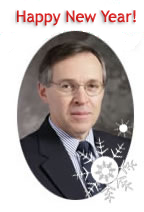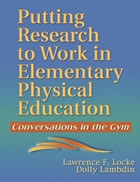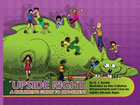IS
INTERDISCIPLINARY TEACHING THE KEY TO PHYSICAL
EDUCATION'S FUTURE?
 Last
month, Education Secretary Arne Duncan posed
the following question to a convention audience
of social studies teachers: Last
month, Education Secretary Arne Duncan posed
the following question to a convention audience
of social studies teachers:
"How can we promote both a well-rounded
education with rich offerings across all subjects
- civics, geography, economics and history,
the arts, foreign languages, physical education,
the sciences etc. - and simultaneously create
a system of real and meaningful accountability
that doesn't lead to narrowing of the curriculum?"
Noteworthy of course was public acknowledgement
by no less a figure than the nation's educational
leader of the important contribution made
by subjects such as physical education to
a well-rounded education. But beyond this,
Secretary Duncan's words challenge physical
educators to think differently about how to
succeed in school climates so heavily focused
on improving reading and math scores.
Not surprisingly, under the threat of NCLB
penalties and fears of closer public scrutiny
of student test scores, school administrators
have felt compelled to focus on nationally
assessed content to the exclusion of other
subjects. Hence the ongoing program and position
cuts in physical education. Implicit in their
thinking is that more time devoted to assessed
content will translate into higher test scores.
Sadly, after almost a decade of trying, test
scores have shown little improvement.
Stepping back it's obvious that the medication
being prescribed to solve the nation's academic
malaise just isn't working and that simply
increasing the dosage makes no sense. Critics
of American public school education reform
efforts point to impressive success stories
beyond our borders. In Finland for example,
students spend less time in school, more time
in recess, manage to master two or three languages,
and still perform better academically.
If time was the crux of the problem the solution
would be simple: Pile it on. Extend the school
day, lengthen the school year, and restrict
the curriculum to little more than mathematics
and reading. But as we've seen, the premise
of this solution is based on faulty logic:
that more time will inevitably improve test
scores. This simplistic viewpoint just isn't
true. It is not the amount of time that is
so important but rather how the time
is spent.
Inherent in this observation is the idea
that educators need to think more about how
they could better use the time already available
to them. An obvious starting point for scrutiny
is a public school curriculum inherited and
largely unchanged since the days of the late
19th century Industrial Revolution.
We might ask ourselves whether the subject
matter distinctions of English, mathematics,
history, geography, chemistry, biology, art,
music, foreign languages, and so on remain
meaningful in today's world? Are these neatly
compartmentalized distinctions an effective
way to organize what we'd like today's public
school students to learn? And of course where
in this melee of subject matter does physical
education best fit? In response, consider
this example of a different kind of curriculum
thinking.
Several years ago at Tahoma High School,
not far from Seattle Washington, future National
High School Teacher
of the Year Tracy Krause collaborated
with two teaching colleagues, Mike Hanson
and Jamie Vollrath, to create what became
known as the "Outdoor Academy."
Three teachers, one in science, one in language
arts, and one in physical education integrated
the content from all three areas into one
class. They managed to throw out traditional
class scheduling and met together with their
students every other day for the entire day.
They organized their instruction in a way
that demanded academic rigor, emphasized content
relevance, and enhanced student and staff
relationships.
These teachers focused on creating integrated
interdisciplinary learning experiences that
complimented each other. For example, when
the science curriculum called for studying
rivers and the biology of river life, Tracy
introduced his students to the knowledge and
skills of fly fishing. Simultaneously, Jamie,
the language arts teacher successfully inspired
students, previously reluctant to read more
than the minimum necessary to get by, to immerse
themselves into the intrigue of Norman Maclean's
novel "A River Runs Through It."
Flexible scheduling allowed students to be
transported to a local river to experience
and appreciate the outdoor environment, practice
their science skills in a real-world setting,
and try out their fly fishing skills. The
results? Students excelled in their academic
tests. Student-teacher personal relationships
had time to evolve and flourish. And many
of the goals for students to truly becoming
physically educated were met.
As Education
Secretary Duncan alluded, it's hard for
subject areas such as physical education to
effectively contribute to student education
when competing against other curriculum content
for class time. It's a problem unlikely to
go away as we anticipate a future in which
students must perform better academically
to succeed in our increasingly knowledge-based
society. But as the Tahoma High School experience
illustrates, perhaps the solution is to break
down traditional subject matter distinctions
and through collaboration better achieve the
goals of all content areas including physical
education.
In reality, it's hard to see how we can ever
succeed in physically educating students as
long as we limit what we do to traditional
physical education classes. If we want our
students to lead healthy and active lifestyles
outside of the time they spend in our gyms,
we have to rethink what we are doing and how
we are doing it.
Interestingly, this moment of reflection
coincides with the current discussion about
the reorganization of AAHPERD. Its no secret
that the majority of Alliance members work
in educational settings and have physical
education as their focus. But often overlooked
is the fact that many teachers see their roles
as physically educating their students
rather than as location bound "gym"
teachers whose sphere of influence is limited
to physical education class time. Many physical
education teachers also endeavor to teach
health and nutrition, promote out-of-class
physical activity, advocate for and often
coach sports, introduce students to rhythms
and dance, and of course teach movement skills.
How can all of this be done in the limited
class time devoted specifically to physical
education? It can't.
But maybe it could, if instead of working
in isolation we integrated ourselves into
a whole person approach to educating today's
young people. Maybe we need to lead the charge
to reject the mind-body dualism inherent in
today's public school education? Instead of
fighting turf battles with teaching colleagues
and fighting off program and position cuts
advocated by misguided administrators, how
about integrating physical education with
other compatible subject matter? In addition
to supporting academic learning there would
be many more opportunities to share important
concepts involved in becoming physically educated.
Physical educators would be less isolated,
our content would be better understood, our
importance better appreciated, and respect
for our profession would increase.
Best of all, as teachers at Tahoma High School
discovered, our students might enjoy school
more and achieve the performance results essential
for successful careers in tomorrow's world.
It's a change that frustrated and stressed-out
public schools physical educators might want
to consider. It's also a change that, if endorsed,
would have huge implications for transforming
the way we prepare future physical educators.
Steve
Jefferies, publisher pelinks4u
|















 Last
month, Education Secretary Arne Duncan posed
the following question to a convention audience
of social studies teachers:
Last
month, Education Secretary Arne Duncan posed
the following question to a convention audience
of social studies teachers: